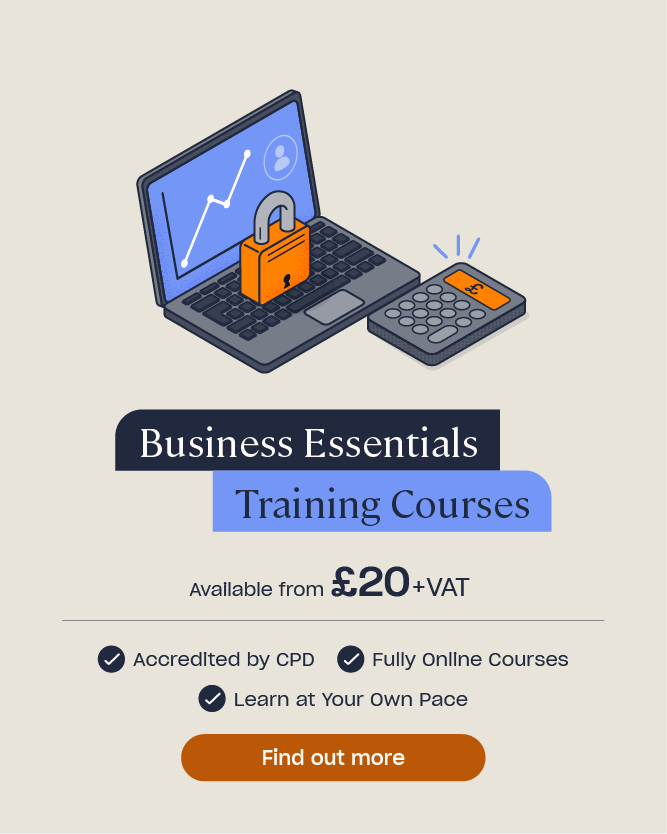Five Top Learning and Development Trends for 2020
With the rapid changes in available technology, learning and development strategies are evolving faster than ever. It’s time for companies to move away from that ‘one size fits all’ mentality and use new training trends to free up valuable time and money.
As more and more people are choosing to work remotely and requesting increased flexibility around their other demands there really is no time like the present to modernise your corporate training.
We have compiled a list of this year’s emerging trends in training and development that are sure to influence your company learning strategies, including how you can make them work in the new climate.
To see how emerging trends compare with those of the last few years, have a look at our predictions for 2017 in the drop-down below:
Top Learning Trends 2017
- Online Training Courses
The top learning delivery trend of 2017 was online training courses. Distance learning saw a surge in popularity as technology continued to evolve and people become busier – and there is no change this year. Whether it be open university degrees, online development training or fun online courses, online learning allows users to access content wherever, whenever. The benefits of online learning include consistent content, increased flexibility, ability to learn at your own pace and cost effectiveness.
- Mobile Learning (M-Learning)
In 2017, mobile learning was a novel revolution for the e-learning world. The years leading up to 2017 saw massive smartphone advancements and made it easier than ever for individuals to get constant access to learning and development materials. This trend has continued, as the constant access means that people can take their learning anywhere, complete it anytime and, if using micro-learning techniques, can complete their learning in short bursts.

- Blended-Learning
Blended learning, the combination of face-to-face (FTF) and online learning, was another trend that, in 2017, started to sweep across universities and businesses alike. Mixing online and traditional teaching styles saw such an increase in popularity that even universities, who had always been slow to drift from tradition, were starting to bend. Blended learning continues to be a good way to cut costs on compliance training. High-quality e-learning courses can be supplemented with in-house practical training, cutting expenses and allowing greater flexibility on where and when training can be undertaken.
- Active Learning
Active learning is the incorporation of activities into the learning period, for example multiple choice questions. Active learning itself was not a new trend, but the use of technology to provide it increased in popularity, as technological advances allowed instructors to use online active learning methods with ease. For example, interactive learning apps could link a normal PowerPoint to people’s mobile phones, so instructors could get real-time responses to questions.
- Social Learning
Social learning is another learning trend that was not a new phenomenon in 2017, but distributed workforces and an increased millennial presence drove its importance in the workplace. Internal social media networks for learning and development presented an easy way to keep a distributed workforce communicating seamlessly. Social learning continues to be as important, as the number of remote workers continue to rise.
In 2017, we focused on trends around delivering learning to your employees. These methods of delivery are still widely used and effective, especially as businesses become more agile and remote working increases in popularity.
This year, we’ve focused on the top trends for corporate learning and development strategies, and where you could consider investing your time and money in 2020.
1. Start from the Top Down
In today’s world, it often feels like there aren’t enough hours in the day. This means that training and development are often pushed aside in favour of work. Development can be seen as less important than day-to-day responsibilities, especially when there are targets to meet and metrics that depend on performance.
A trend for 2019 was ensuring that your company has a positive learning culture. The focus is still much the same for 2020, however, the drive needs to begin at the top. Therefore, it’s important to get executives, managers, and supervisors involved in the planning of your strategy. They need to understand the need for development, be confident in the resources available and be invested in supporting their teams through their development journey within your company.

Our free staff training calendar template could help your employees, and your business, create a positive culture around learning and development.
2. Support Personal and Professional Development
Often, employers place their focus on compliance training and allow employee development to fall to the wayside. There is a common misconception that development opportunities take time and money that business can’t justify spending.
However, not all training and development opportunities carry extortionate time and money costs. With the wide availability of online training courses, books and free resources, there are always cost and time effective solutions.
Additionally, there are so many benefits to investing in your employee’s development, that all businesses should consider it a priority. The benefits of investing in employee development include:
- Improved performance, satisfaction and morale. Training will help to improve an employee’s skills, their confidence in their ability to perform their job, and will help them to feel challenged and supported. If you create a positive culture that places emphasis on training, your employees will feel valued and respected.
- Reduced turnover. If you invest time and money in developing your existing employees, they will feel valued and more committed to your company. They will likely look internally for promotions and will feel like their future really matters. Hiring is expensive, so investing the money in your employees is worth it.
- Enhanced reputation for your business. The more you show you invest in your employees, the more candidates you’ll attract when hiring. You’ll develop a positive reputation as a company that supports and values its employees.
You should support your employees’ careers by helping them write personal and professional development plans. These will help them build on their skills and become more confident in the workplace.

Investing in your employees’ skills is a great way to let them know you value them and want them to develop.
3. Customisable Learning and Development
As mentioned above, hiring costs time and money. Therefore, once you’ve found the perfect employee, it’s important to show you’re invested in them.
While all employees will have to undergo the same compliance training, it’s important to show you’re invested in their personal and professional development by tailoring their learning. One-size-fits-all training will not inspire commitment to your organisation.
Therefore, to boost your learning and development strategy this year, you should begin customising your learning opportunities. Customisable learning and development will help you provide your employees with the tools needed to progress through your organisation and succeed in their roles.
You should be creating customised learning outlines for every role you intend to hire. These should detail the learning journey for the role and the skills they need to achieve to be considered for progression. These learning outlines will help:
- Employees create development plans that advance their careers.
- Employees know where development opportunities are.
- Inspire your employees to work towards promotions within your organisation instead of looking elsewhere.
Customising your learning goes hand in hand with investing time and money in supporting your employee’s personal and professional development. The more effort you put into supporting your employees’ careers within your company, the more committed, satisfied, innovative and productive they will be.
For more ways you can invest in your employees and reduce staff turnover rates, take a look at our pick of the best employee engagement strategies for 2020.
4. Use the 70:20:10 Learning Model
Using the 70:20:10 breakdown, can help your employees to choose personal and professional development goals and better identify how they can effectively learn the skills they’d like to build.
The 70:20:10 describes a proportional breakdown of learning sources to help maximise learning. It explains that individuals acquire:
- 70% of their knowledge from experience. For example, job-related or life experiences.
- 20% of their knowledge from others. For example, interacting with peers and social learning.
- 10% of their knowledge from organised courses, such as online or face to face training courses.
While using structured courses is important, this year you should also place emphasis on helping your employees use and practice their new-found skills during their day-to-day role. Additionally, you should help them engage in social learning with their peers, for example mentoring or job shadowing. Both of these will help to reinforce any courses they have taken, ensuring they can make use of all the skills they are developing.
5. Speed and Ease of Access
As mentioned above, there’s a common misconception that development opportunities take time and money that businesses can’t justify spending.
In reality, technology has made it easier than ever to find learning solutions that are time and cost effective, and that can easily fit around your employees’ day-to-day duties. Therefore, you should streamline your learning and development strategy this year by looking for alternatives, that will continue to provide you with high quality learning and save you time and money.
This is specifically important for compliance training, such as health and safety training, which is essential for all employees to take.
Consider online training courses (or e-learning courses) as an excellent way for your employees to learn at their own pace, wherever and whenever it suits them.

Additional benefits include:
- Cutting transport costs to and from a learning venue.
- Avoiding the risks of employees missing training due to absences.
- The ability to buy courses in bulk, allowing for greater discounts.
- Consistent content for everyone.
- Ability to track your employees’ progress to keep on top of your legal duties.
For personal development, online courses, books, Tedx Talks, and conferences can be useful low cost, time effective options to enhance your learning strategy.
Need a Course?
High Speed Training has a library of online courses to support your company’s compliance training needs, such as health and safety and food hygiene. You can take these courses from any device, from any location! We also provide convenient courses to assist with personal development and awareness, which you will find in our business section.
Investing in learning and development will provide you with a wealth of organisational benefits, including boosting morale and productivity across your business. However, this doesn’t just mean money. Take the time to properly think about your strategy, where can you cut costs, save staff time and support them in their development.
What to Read Next:
- Training Calendars: Why Your Company Needs One
- What is CPD? A Guide to Continuing Professional Development
- How to add a High Speed Training Certification to your LinkedIn Profile
- What Skills Do the UK Wish They Had Been Taught in Schools?
- Working From Home Schedule: Free Template











